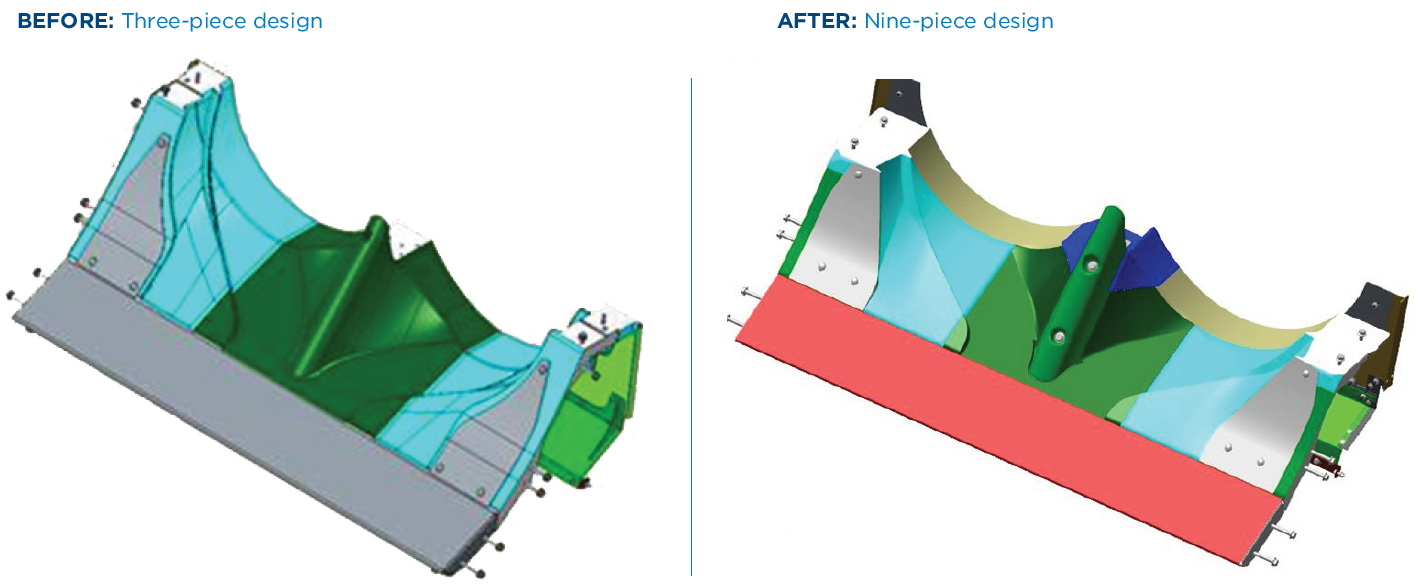
Case Study
Out-of-the-Box Thinking Leads to Robust Feeder Housing Assembly
Using lessons learned from a past design success, Waupaca Foundry collaborated with a global leader in farm equipment and ag technology on a high-capacity combine. Our recommendation for a solution was somewhat counter-intuitive—increase the number of parts on the feeder housing assembly.
The initial design of the feeder housing was a challenge to cast and too large to fit vertical molding machines. Originally designed as a three-piece, large-scale concept, the parts were also too thin and prone to warping. The manufacturer was unable to find a partner to develop an improved iron casting of the same design. The three pieces were simply too deep and too-oddly shaped to fit the mold cavity.

The manufacturer tasked Waupaca Foundry with finding a way to produce the harvesting parts on vertical molding machines. A modular design offered a more robust solution, which required changing the draw angle out of the mold without cores. With this objective established, the team began whittling away at the overall part size and draw design of the assembly. This increased the number of iron castings from three to nine—an initiative that’s contrary to what Waupaca Foundry typically pursues.
Iron casting designs were agreed upon for shape, draw depth and angle in the mold. Magma simulations were conducted to eliminate or mitigate porosity and avert machining concerns. Some iron castings were further reinforced with ribbing or added material to ensure strength and support and to minimize cold shut defects. Ultimately, the collaborative team created a nine-piece iron casting solution while maintaining the product profile and design span.

The manufacturer found an engaged partner in Waupaca Foundry, one willing to collaborate over the long term. Typically, Waupaca Foundry develops solutions that result in thinner and lighter-weight iron castings, in fewer parts and with less machining. This time, the best solution for the manufacturer required increasing assembly from three to nine iron castings to improve its manufacturability in the foundry and durability in the field.
- Realized cost savings compared to horizontal molding.
- Created a more ergonomic and safer assembly by eliminating heavy, oversized parts.
- Implemented lessons learned from past design success.
- Prevented cold shut and warping scrap by improving iron casting design.
